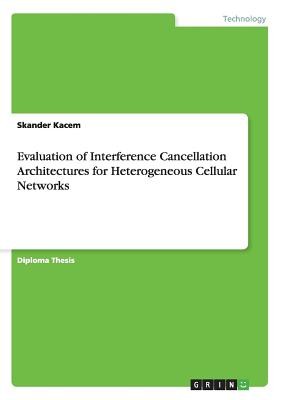
- We will send in 10–14 business days.
- Author: Skander Kacem
- Publisher: GRIN Verlag
- Year: 2013
- Pages: 68
- ISBN-10: 3656458081
- ISBN-13: 9783656458081
- Format: 14.8 x 21 x 0.4 cm, softcover
- Language: English
- SAVE -10% with code: EXTRA
Evaluation of Interference Cancellation Architectures for Heterogeneous Cellular Networks (e-book) (used book) | bookbook.eu
Reviews
Description
Diploma Thesis from the year 2012 in the subject Engineering - Communication Technology, grade: excellent, Technical University of Berlin (Intelligent Networks), language: English, abstract: With the increasing data throughput requirements, the cellular network needs to move from homogeneous to heterogeneous system. In fact, the coexistence of different types of base stations with different capabilities such as femto/pico base stations as well as relays and macro base stations in random placements should improve the coverage and the spectral efficiency of the cellular networks. However, the complexity of inter-cell interference management will grow drastically and traditional interference avoidance/mitigation approaches need to be revised. Approaching this problem at the user equipment (UE), is of great interest since it can rely on little coordination among base stations. The work presented in this thesis focuses on a downlink interference cancellation at the UE and shows that such an intelligent receiver can bring its promised benefit only if the base stations get involved in the interference cancellation, specifically in the channel estimation process. The limitations of this approach are evaluated and depending on the surrounding base stations two solutions are proposed and discussed.
EXTRA 10 % discount with code: EXTRA
The promotion ends in 18d.22:16:09
The discount code is valid when purchasing from 10 €. Discounts do not stack.
- Author: Skander Kacem
- Publisher: GRIN Verlag
- Year: 2013
- Pages: 68
- ISBN-10: 3656458081
- ISBN-13: 9783656458081
- Format: 14.8 x 21 x 0.4 cm, softcover
- Language: English English
Diploma Thesis from the year 2012 in the subject Engineering - Communication Technology, grade: excellent, Technical University of Berlin (Intelligent Networks), language: English, abstract: With the increasing data throughput requirements, the cellular network needs to move from homogeneous to heterogeneous system. In fact, the coexistence of different types of base stations with different capabilities such as femto/pico base stations as well as relays and macro base stations in random placements should improve the coverage and the spectral efficiency of the cellular networks. However, the complexity of inter-cell interference management will grow drastically and traditional interference avoidance/mitigation approaches need to be revised. Approaching this problem at the user equipment (UE), is of great interest since it can rely on little coordination among base stations. The work presented in this thesis focuses on a downlink interference cancellation at the UE and shows that such an intelligent receiver can bring its promised benefit only if the base stations get involved in the interference cancellation, specifically in the channel estimation process. The limitations of this approach are evaluated and depending on the surrounding base stations two solutions are proposed and discussed.


Reviews